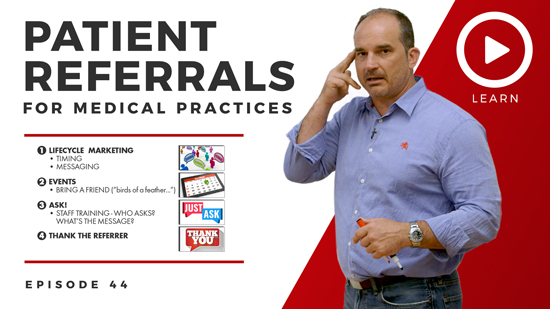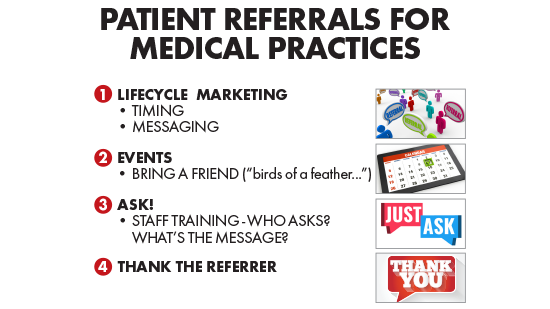Lifecycle Marketing
With regard to generating referrals, you should have pre-determined messages and times, based on your exact relationship with your patients. The timing of the messages and the message itself is important. Create one-to-one messages to the right group of patients to help generate referrals. This should be personalized, not a mass-email message to your entire distribution list, in order to get the best results.
Events
Events are a huge opportunity to generate lifetime value from referrals from existing patients. Simply invite existing patients to bring a friend to an event. This lowers or eliminates your marketing costs outside of those done for the event, and from a psychological standpoint, this is extremely effective. Satisfied patients are likely talking to their friends and family about the procedures they’ve had at your office, so these potential customers are already positively primed for an experience with you and your team.
Ask
This is another important part of patient referrals. Who asks for referrals from patients? When do they ask? What is the message? Train your staff to know when to have these conversations. The best person to ask these questions may vary by patient or by procedure. Whatever the case, understand what makes the most sense for your office and then determine who will ask and what the message will be.
Thank the Referrer
This is a pivotal but often overlooked aspect of the patient referral process. Whether you thank the referrer with a phone call, an email or any other method that feels relevant to your practice, the most important thing is to take the action to make it happen. Although you may have a smaller subset of referrers, those who do send referrals will continue to send you more. As a result, be sure to acknowledge their efforts and express gratitude for their assistance.


















